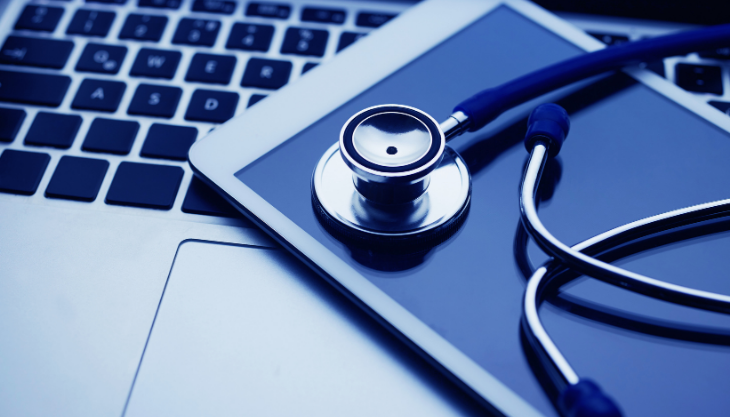8 Crucial Lessons the Medical Industry Learned from 2020
Posted by Meditab Software, Inc.
Healthcare Technology TeleHealth Patient Engagement
Saying COVID-19 surprised the medical community this year would be an understatement. No one fully understood the scale or lasting ramifications the pandemic would come to have. Hardship, both big and small, has defined the past year, but 2020 has also been a year of lessons that will improve and strengthen the medical industry for years to come. Here are eight things we won’t easily forget:
1. Community Health Is Personal Health

More than ever, we have come to realize the full impact our communities’ health has on our patients. When each person’s health is just as dependent on their neighbor’s actions as on their own, it adds new weight and responsibility to medical professionals. How do you treat the health of an entire community, though?
With advances in technology and new communication tools more available to practices than ever, providers can reach out not only to their patients but to other people as well. Blogs and social media are excellent tools to educate people. Giving health tips, reminders, or news about what’s happening in your community can help bolster the reputation of your practice and give your patients a healthy world to live in.
2. Remote Is the New Normal

To preserve the health and safety of workers, remote work has become the norm for most workers. According to IBM CHRO Diane Gherson, 95% of IBM’s workers worked remotely during the pandemic. Whether it is working, shopping, or video chatting, more people than ever have adopted new tools and ways to do business.
That’s especially true for medical patients. While in-person visits will always continue, there has been a shift in how patients approach healthcare and a more extensive acceptance of doing things remotely. Beyond the apparent surge in Telehealth, similar changes are evident with patient portals and mobile health apps, as patients embrace healthcare that isn’t necessarily tied to an office.
Growing accustomed to online services, patients will likely continue to gravitate towards online appointment booking, online prescription refills, filling out forms on their computer or phone, and more. While not new, 2020 has shown these trends to be strengthening, and practices need to be ready.
3. Achieve More with Less

The pandemic has paved the way for streamlining work processes. The added burden of dealing with COVID-19 has further exposed the small places every practice can improve. Whether it’s keeping your staff from burning out, increasing efficiency, or cutting down on waste, 2020 has pushed practices to reconsider how they do things.
Thankfully that’s where new technology can help. As it becomes more evident than ever how interconnected office operations are with patient care, practices can turn to software and tools to lighten the load. For example, Meditab recently revealed EMO, the Electronic Medical Office, a series of modules integrated with IMS to optimize the medical office. From scheduling your staff more effectively, to tracking phone calls, tools like EMO extend the traditional role of an EHR to include the entire practice. Addressing problems of staff burnout and forgotten calls are as fundamental to patient care as electronic records.
4. Preparation and Planning Are Everything

COVID-19 has reminded all of us to prepare for things to go haywire and to always have a plan of action ready. Whether it is financially or with medical resources, many practices will be more cautious going into next year and beyond.
It is a given in the medical industry that most people need to know how to respond to a crisis and be resilient, but establishing a more substantial foundation can make those responses significantly easier. Investing more time and energy into your practice website or making sure your staff is fully trained on all your software allows the entire practice to avoid unnecessary stress. Then, when the time comes to reach out to patients or provide new forms of care, like Telehealth, your practice is ready.
5. Alternative Care Pathways Are Important

Healthcare is not being performed only in hospitals and clinics. Along with new channels like Telehealth, patients are asking for more convenience and less time in the doctor’s office. As part of that, 2020 has seen a growth in alternative care pathways, like homecare and remote lab testing.
Home health presents healthcare providers with opportunities to effectively manage care and medication adherence for moderate/high-risk patients. The trick is then coordinating care and keeping that patient engaged. As patient expectations change, the ways providers meet those expectations are likely to keep evolving as well.
6. Work Smarter

Using technology to grow one’s practice is critical in today’s fast-paced world. Even with an EHR, many practices still rely on old-school processes. According to Dr. Andrew Mellin, Vice-President of Medical Informatics at Surescripts, EHRs can help providers stay informed on the patient’s clinical and economic factors, enhance documentation and communication processes, and coordinate with pharmacies. Modern EHRs, however, can also do so much more.
An EHR with “smart features” allows a provider to connect with patients whenever and wherever they need them and keep them engaged through mobile patient healthcare apps. You can send and receive health records securely through chat and messaging, participate in video consultations, and engage patients more actively through patient apps.
7. Telehealth Is Becoming Essential

We’ve all known for a while that the future is online. While Telehealth and other online care tools have held a steady trend upwards in previous years, 2020 sent them skyrocketing. According to Jonathan Linkous, CEO of the American Telemedicine Association, “In an age where the average consumer manages nearly all aspects of life online, it’s a no-brainer that healthcare should be just as convenient, accessible, and safe as online banking.”
That’s led to a growing acceptance and desire for everything from Telehealth to patient portals. Both the World Health Organization (WHO) and the Centers for Disease Control and Prevention (CDC) acknowledge that Telehealth is a perfect tool to bring effective healthcare to remote areas, increase patient engagement, and monitor chronic health conditions.
8. Telehealth Can Reduce Costs

According to Dr. Neal Patel, the CIO for Health IT of Vanderbilt University Medical Center, throughout the pandemic, it became clear Telehealth could help “to limit exposure and not use up protective equipment just for a conversation.”
Sure enough, it helped save supplies and bed space by keeping low-risk patients at home. Beyond that, though, as CMS and insurance companies increased payments for Telehealth services, the benefits kept appearing. From increasing the speed of patient turnover to bringing in new patients, practices saw the effect Telehealth could have on the bottom line.
-
The medical industry has endured more than its fair share during the pandemic. Whether your practice is on the front lines or continuing to help patients in all of the other necessary ways, 2020 demanded a lot. It’s due to the resourcefulness, tenacity, and spirit of the entire health care field that next year can be a bit brighter.
These are far from the only lessons that practices learned this year, but as we all look forward, they offer a place to build. While we can’t know exactly what the future holds, we know these are excellent first steps towards even stronger, healthier practices.
Share this post: on Twitter on Facebook on Google+

